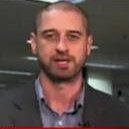 There could be few more difficult jobs up for grabs in corporate America right now than heading up AIG. But for intrepid leaders with steely nerves, the path to glory at the still-troubled insurance giant may not be as perilous as it seems.
There could be few more difficult jobs up for grabs in corporate America right now than heading up AIG. But for intrepid leaders with steely nerves, the path to glory at the still-troubled insurance giant may not be as perilous as it seems.
The top job became available last week after Peter Hancock said he’d stand down just two-and-a-half years into his tenure. He was succumbing to pressure from activist investors Carl Icahn and John Paulson, who were disappointed with the company’s continued run of red ink, despite it having already repaid the federal bailout that brought it from the brink of collapse in 2008.
AIG last month booked a $3 billion quarterly loss, widening from a $1.84 billion loss a year earlier. The damage was driven by a need to increase reserves to cover claims in its property and casualty division, which includes workers’ compensation, commercial vehicles such as trucks, medical malpractice and damage to buildings and factories.
And there-in lies the opportunity for Hancock’s successor. Insurance is a complex business, but the key is setting premium prices that are low enough to attract new customers, but high enough to cover any claims they make down the track—and still eke out a decent-sized margin.
Hancock, previously a banker at JP Morgan and an insurance-industry outsider, appears to have got that calculation wrong. Most of the fresh reserves booked in the property and casualty division were related to policies issued between 2012 and 2015, a time period where he was either head of that business division or CEO of the company.
To be fair to Hancock, the Brit was trying to steady a ship that had gone through five captains in the decade before him. His replacement, though, has an opportunity to start issuing better policies—and after his predecessor has perhaps helped clear the decks by getting some bad news out of the way.
Some of Hancock’s potential successors come with a hard property and casualty insurance background, including the likes of Chubb COO John Keogh and Marsh & McLennan CEO Brian Duperreault.
Rising interest rates could provide them with a tailwind. Insurers invest the money they store to pay out claims relatively conservatively, meaning they had to weather paltry returns while interest rates remained stuck at or near zero following the financial crisis. Data released last week showing the U.S. unemployment rate fell to 4.7% in February from 4.8% has raised expectations the Federal Reserve will hike rates again as soon as this month.
Whatever happens—whoever gets in the hot seat—will still have Icahn and Paulson breathing down their neck. Icahn, in particular, has been agitating for a breakup of the group into three separate companies that he argues would lessen the overall regulatory burden.
Perhaps it would help for interested candidates to have some portfolio-management experience in reserve. Just in case.

Chief Executive Group exists to improve the performance of U.S. CEOs, senior executives and public-company directors, helping you grow your companies, build your communities and strengthen society. Learn more at chiefexecutivegroup.com.
0

1:00 - 5:00 pm
Over 70% of Executives Surveyed Agree: Many Strategic Planning Efforts Lack Systematic Approach Tips for Enhancing Your Strategic Planning Process
Executives expressed frustration with their current strategic planning process. Issues include:
Steve Rutan and Denise Harrison have put together an afternoon workshop that will provide the tools you need to address these concerns. They have worked with hundreds of executives to develop a systematic approach that will enable your team to make better decisions during strategic planning. Steve and Denise will walk you through exercises for prioritizing your lists and steps that will reset and reinvigorate your process. This will be a hands-on workshop that will enable you to think about your business as you use the tools that are being presented. If you are ready for a Strategic Planning tune-up, select this workshop in your registration form. The additional fee of $695 will be added to your total.

2:00 - 5:00 pm
Female leaders face the same issues all leaders do, but they often face additional challenges too. In this peer session, we will facilitate a discussion of best practices and how to overcome common barriers to help women leaders be more effective within and outside their organizations.
Limited space available.

10:30 - 5:00 pm
General’s Retreat at Hermitage Golf Course
Sponsored by UBS
General’s Retreat, built in 1986 with architect Gary Roger Baird, has been voted the “Best Golf Course in Nashville” and is a “must play” when visiting the Nashville, Tennessee area. With the beautiful setting along the Cumberland River, golfers of all capabilities will thoroughly enjoy the golf, scenery and hospitality.
The golf outing fee includes transportation to and from the hotel, greens/cart fees, use of practice facilities, and boxed lunch. The bus will leave the hotel at 10:30 am for a noon shotgun start and return to the hotel after the cocktail reception following the completion of the round.